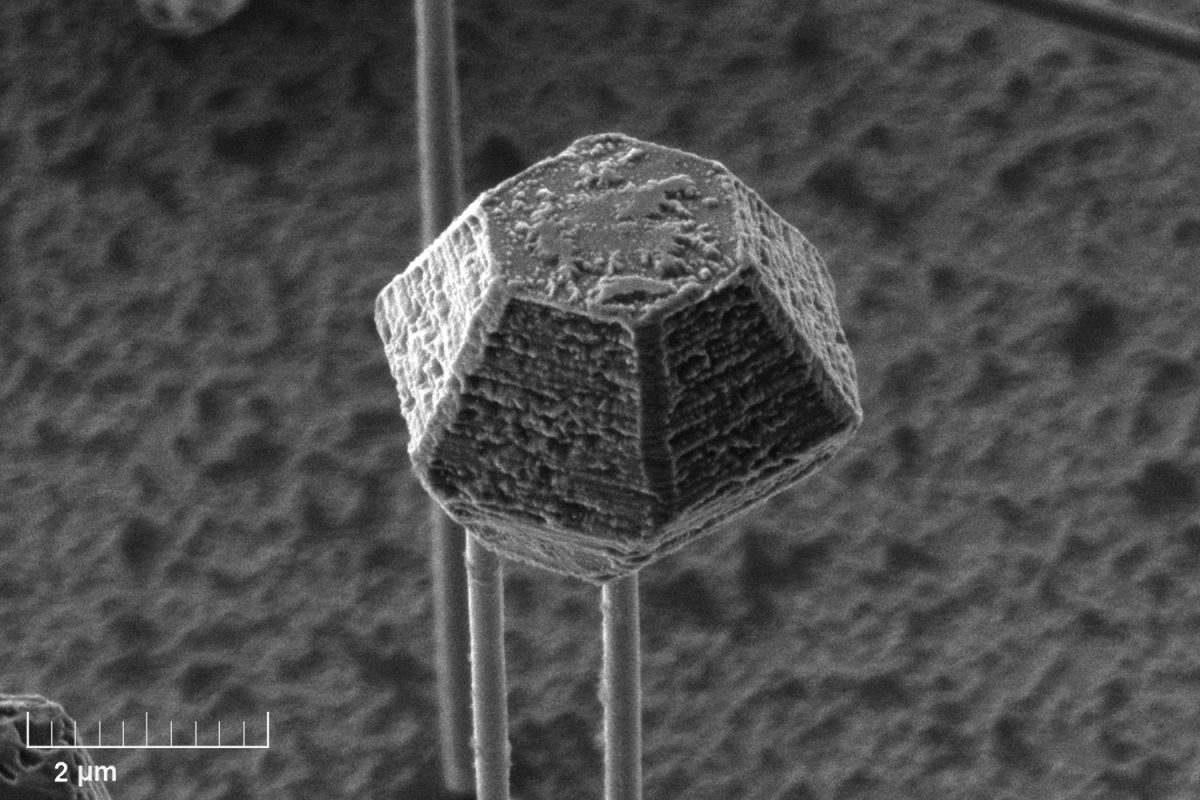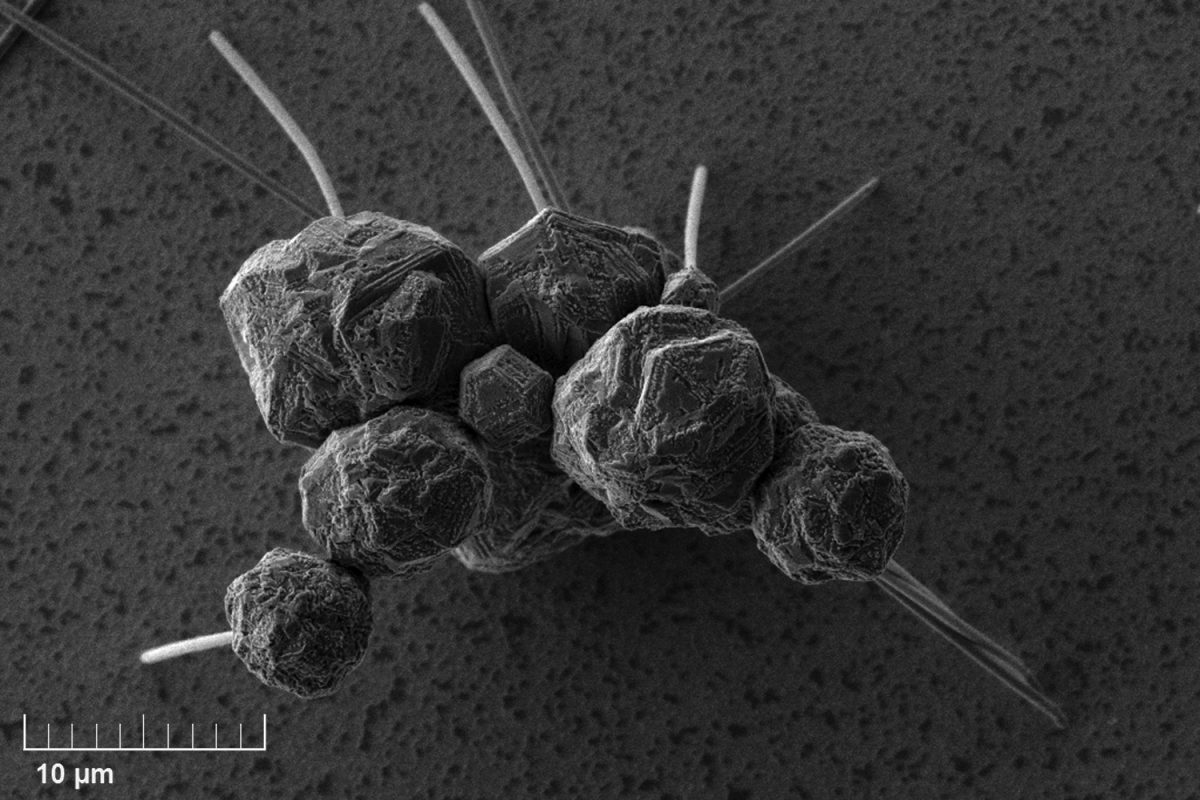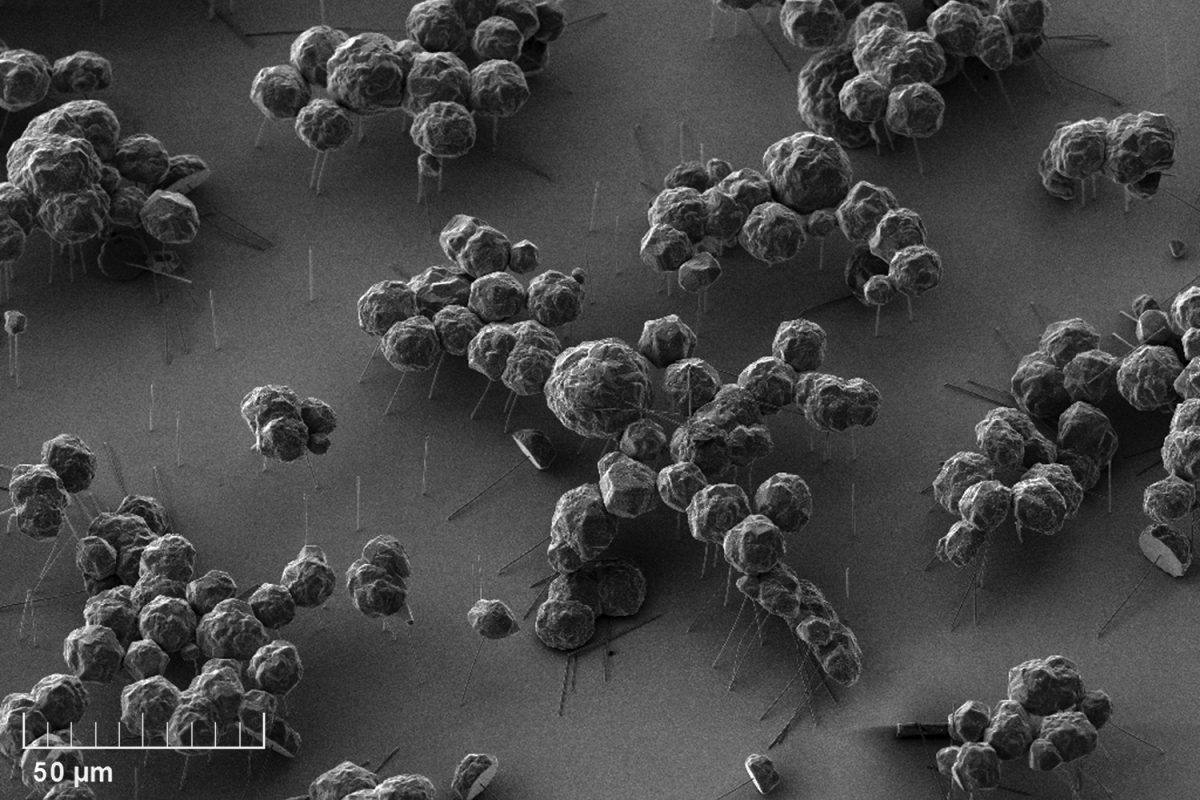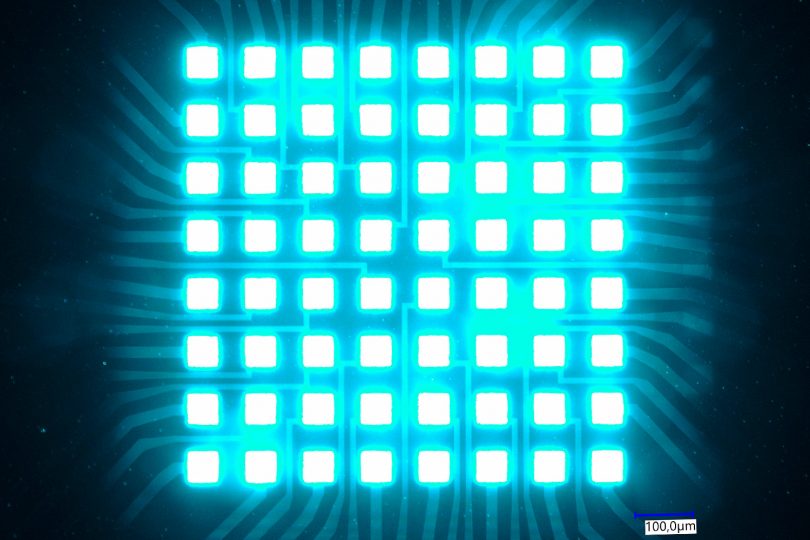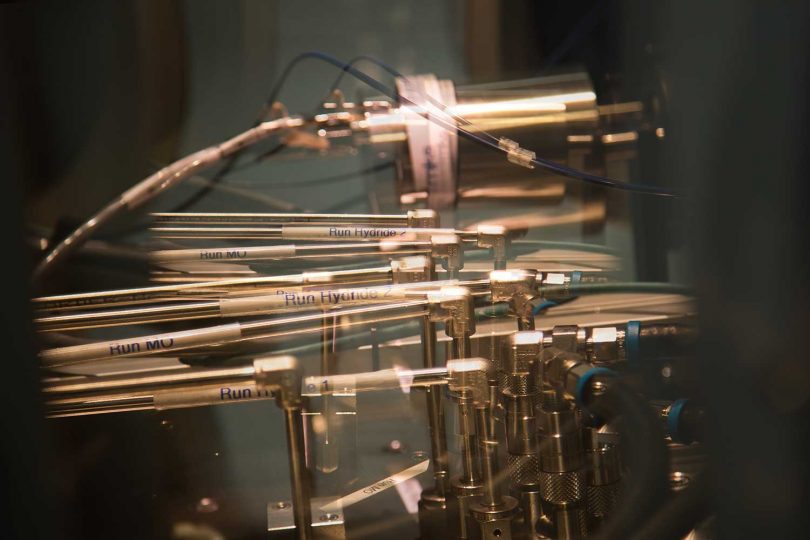Picture of the Month: Miniscule copper chestnut animals From the Institute of Semiconductor Technology
A walk on a golden autumn day can be a lasting delight. For when cold rain drums against the windows on a grey day, the chestnuts collected during the walk and a few toothpicks can be used to make caterpillars, deer and co. Maximilian Vergin from the Institute of Semiconductor Technology at the TU Braunschweig had neither chestnuts nor toothpicks at hand. But he did have the know-how to produce microscopic nanowires from metal, complete with jewellery-like tips. What chance has concocted into nano chestnut animals is now our picture of the month for the fall.
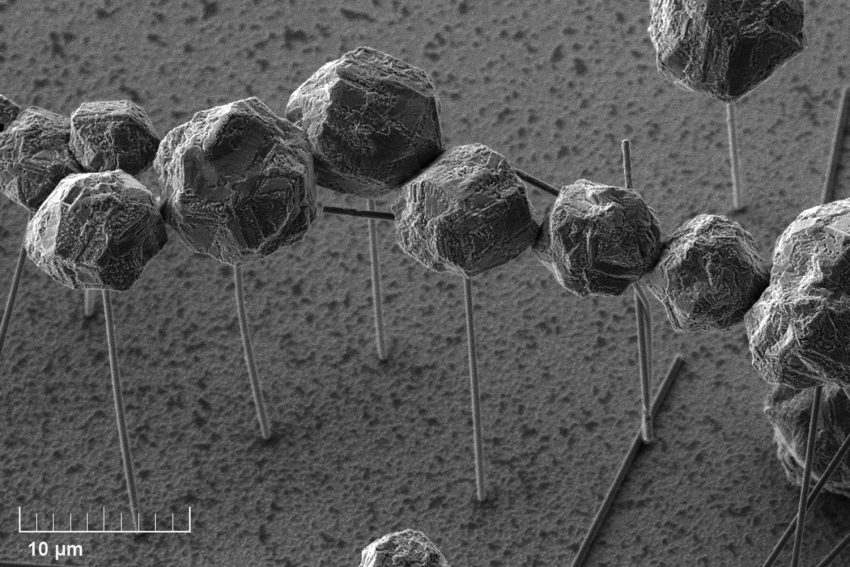
Becoming chestnut animals by accident: Nanowires with contacting surfaces at the tip. Image credit: Maximilian Vergin/TU Braunschweig
What is so reminiscent of autumnal tinkering is a relevant technology for component integration for the Cluster of Excellence QuantumFrontiers and the Quantum Valley Lower Saxony. The wires are about 100 times thinner than a human hair and function as tiny power cables connecting different semiconductor components in a very small space. What looks like chestnuts or large gemstones, depending on their shape, helps to explore the fundamental electrical properties of the nanowires for applications: The thick knobs enable easier contacting with measuring needles in the scanning electron microscope.
Connecting role in quantum computer construction
Connecting role in quantum computer construction
The wires are used, for example, in micro-LED technology. While the controls of the LEDs are realized in silicon, the LEDs are naturally made of gallium nitride. Here, the nanowires can form the literal bridge between the semiconductor worlds and thus ultimately enable more LEDs on one chip. Nanowires play a similarly connecting role in quantum computer construction in Quantum Valley Lower Saxony: Here, the task is to connect the tiny ion traps – the heart of the supercomputer – with more macroscopic electronics. The nanowires help to bridge the gap between the different size scales.

